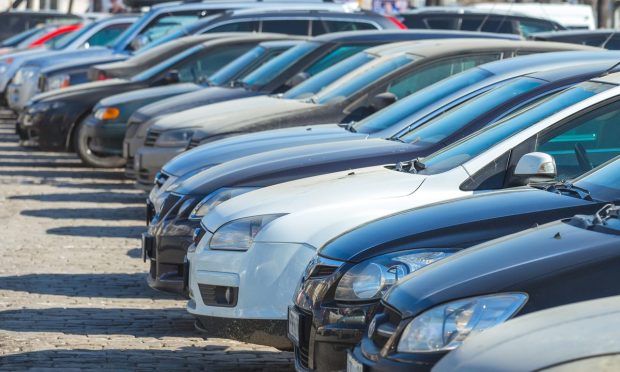High New and Used Car Prices Keeping Pedal to the Metal Until Production Catches Up

As 2021 drew to a close, vehicle valuation and automotive research company Kelly Blue Book (KBB) released the startling stat that the “average used car price tops $27,000 for the first time,” noting that this base price is “a jaw-dropping 41% higher than in November of 2019, the last month before COVID-19 was first detected and knocked the world’s economy off its tracks.”
KBB competitor Edmunds.com placed the average used car slightly higher at just over $29,000.
Car shoppers — new or used — and those fixing wheels they already own should put some padding under their jaws because they will likely continue dropping throughout 2022.
Among the hardest hit by COVID-19 lockdowns, microchip shortages and supply chain slowdowns, the automotive industry needs a lift, with inventories radically depleted and uncertainty ahead.
There are essentially two schools of thought as to what happens over the next six months.
Optimists believe the automotive market correction is underway now; pessimists say late 2022.
Ask White House Press Secretary Jen Psaki, as a reporter did in December, and she’d respond that “as it relates to cars …wholesale car prices are down as well — or used car prices are down as well. So, when car dealers are purchasing cars, they are at a lower cost than they were before for a range of reasons. That means that as we look to the first quarter of next year or the first couple of months of next year, those car prices are going to keep coming down.”
Sounding less upbeat about new cars, NBC News reported on Jan. 1 that “All told, automakers worldwide produced about 8 million fewer vehicles than planned last year because of product shortages. Even if production rebounds, dealers won’t be able to build back inventories until well into 2022, J.D. Power analyst Tyson Jominy said. As a result, buyers should expect limited choices — while prices will continue to rise at a record rate. At the end of 2021, a typical new vehicle cost $45,000, up about $8,000 from December 2020, according to industry data.”
Today’s new cars are tomorrow’s used models, and with the gap between the cost of new and used cars closing at an alarming rate, few believe normalcy is imminently returning to autos.
U.S. News reported on Monday (Jan. 3), “consumer inflation rocketed 6.8% in the 12 months that ended in November — the sharpest jump in nearly 40 years — [and] the biggest factor, apart from energy, was used vehicles. And while the rate of increase is slowing, most experts say the inflated vehicle prices aren’t likely to ease for the foreseeable future.”
Despite the gloom and cloudiness of the current picture, many in the auto industry believe that between ramped-up production and incentives that disappeared during the pandemic, there will be sufficient inventory on both sides of the equation to bring pricing in line by mid-year.
In a recent blog, Cox Automotive Chief Economist Jonathan Smoke said, “Dealers view the economy as strong heading into the winter and are much more optimistic about the spring compared to their views a year ago,” assuming that production fixes the pandemic backlog.
Auto parts as a sector is benefitting from the pandemic instability in auto sales.
As PYMNTS recently reported, “Both Amazon and Walmart will likely see continued pressure in the coming months…from pure auto parts retailers that have spent the last 18 months bolstering their eCommerce operations and are now reaping the benefits.”
“Advance Auto Parts, for example, saw a nearly 6% rise in net sales in the second quarter, while AutoZone logged a 29% year-over-year increase. O’Reilly Auto Parts also reported a nearly 10% increase in comparable sales for the quarter, on top of a 16% increase in 2020.”
